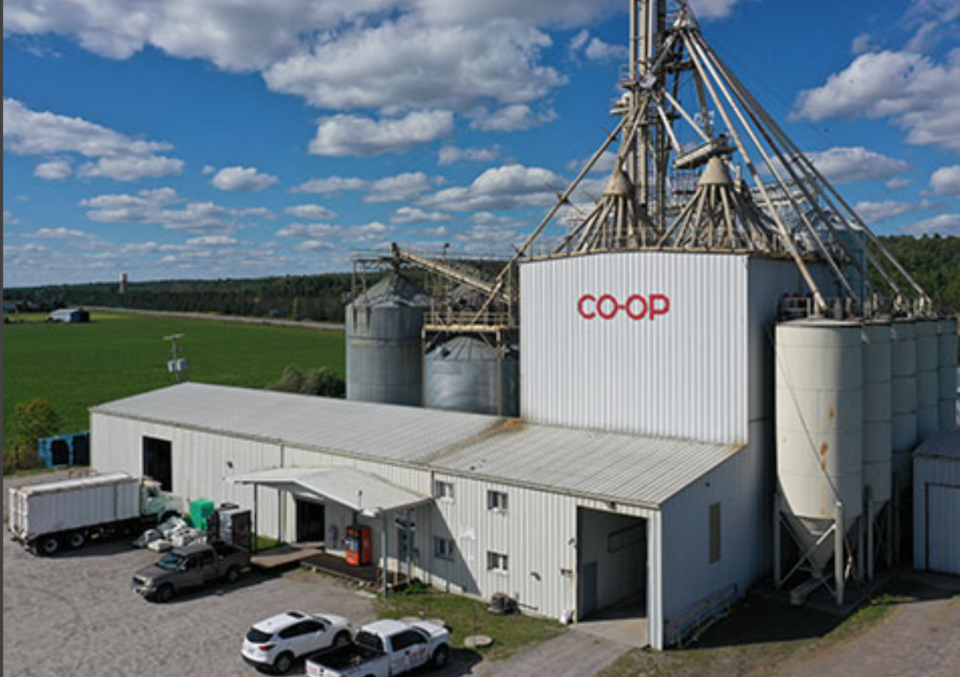A robust agricultural scene in northeastern Ontario has spurred Co-op Régionale to expand its storage at its Timiskaming (Thornloe) and West Nipissing (Verner) locations.
Brandon Tuinema, agriculture manager for Co-op Régionale, said the 4,000 member-owned organization is adding two grain bins, one each at its Timiskaming and West Nipissing locations this summer in anticipation of another large crop this year.
The 60-foot diameter bins can hold up to 3,000 tonnes of wheat.
The almost $2-million investment is largely attributed to the growth in acreage under cultivation, the changing crop mix, higher yield crops and more consistent year-by-year successful crop years, especially in the Verner area, Tuinema said.
The expansion and investment is representative of the state of agriculture in northeastern Ontario.
“Every indication is that agriculture in Temiskaming is thriving,” said Tuinema.
Slight changes in genetics have led to more consistent and better-yielding crops.
More producers and newcomers are buying up farmland and tiling it through Northern Ontario Heritage Fund programming to convert pasture land into crop production. There’s also more help technical help in the area with agronomy staff. The co-op has three such crop advisors on staff.
“We’re getting more sophisticated in how we grow the crop, timing on nutrient application, same with crop protection,” said Tuinema. “Timing is huge. We're just getting better yields.”
Realizing this need, the co-op board of directors decided to make the investment in storage for its membership and customers in the area.
“Every year at harvest, we would fill up the silos and be turning away customers.”
The Timiskaming project is complete. The Verner build, which started in May, is expected to be finished this month. Both bins will be pressed into service shortly.
“We’ll start seeing some winter wheat come off first week of August with oats to follow a couple of weeks later.”
It’s a further upgrade from a previous investment made in 2018.
Tuinema said the co-op management won’t hesitate to expand again if the opportunity to move grain faster warrants the investment.
“I suspect if the area keeps trending the way it is, we’ll be adding more storage or receiving facilities.”
The producers themselves are a mix of locals acquiring and improving land. But there still are southern Ontario folks selling acreage down there for less expensive property here and large-scale commercial operators from the Holland Marsh area diversifying their operations and growing more horticultural-type crops in the northeast.
Tuinema said there remains room for growth in the northeast with plenty of farmland available, especially in the area of the Greater Claybelt — running east from Kapuskasing into the Lake Abitibi area — which remains vastly underdeveloped.
Compared to a decade ago, Tuinema said it’s been neat to see changes in infrastructure, science and in the application of technology across the region.
Today, growers are consistently pulling off soybean crop compared to 10 years ago, when it was considered risky. Both the Timiskaming and Verner facilities have been handling dry corn through the elevator over the last two years, a crop that hasn’t been seen in the past.
“Better traits, and risk tolerances, producers are willing to try a different crop mix, and there’s better agronomy-type help to crop it.”
This latest expansion doesn’t translate into an any additional direct jobs, he said, but keeps those already on the payroll gainfully employed.
“In this business, it’s small margins. We rely on economy of scale.”
“As a co-op, we’re trying to aggregate volume and then move it out of Northern Ontario to end users and it’s important to have that economy of scale.
“From a marketing perspective, we make sure producers are getting the best price for their grain. There’s a big difference between marketing 100 tons and a 1,000 tons at a single contract time.”



